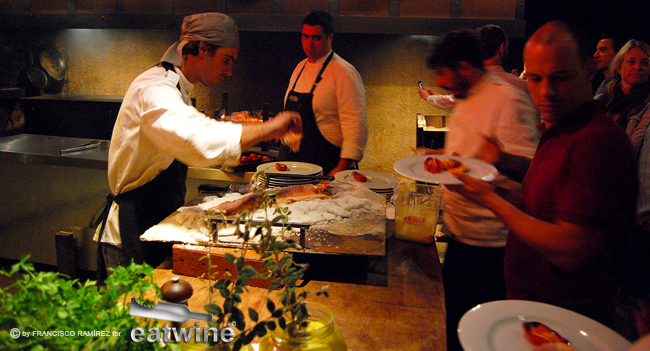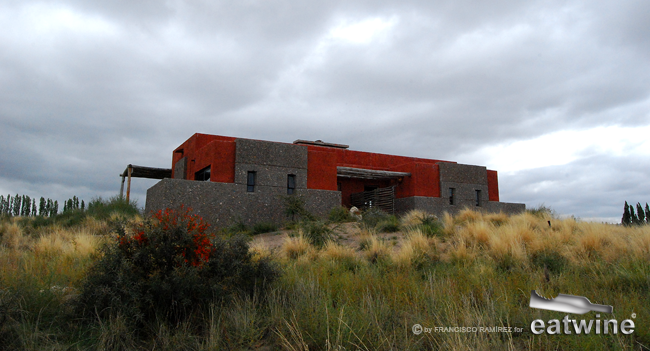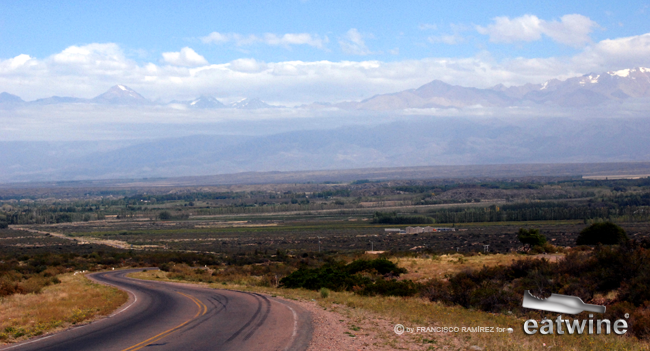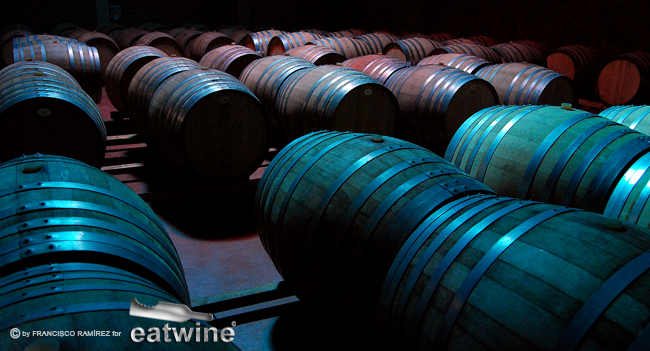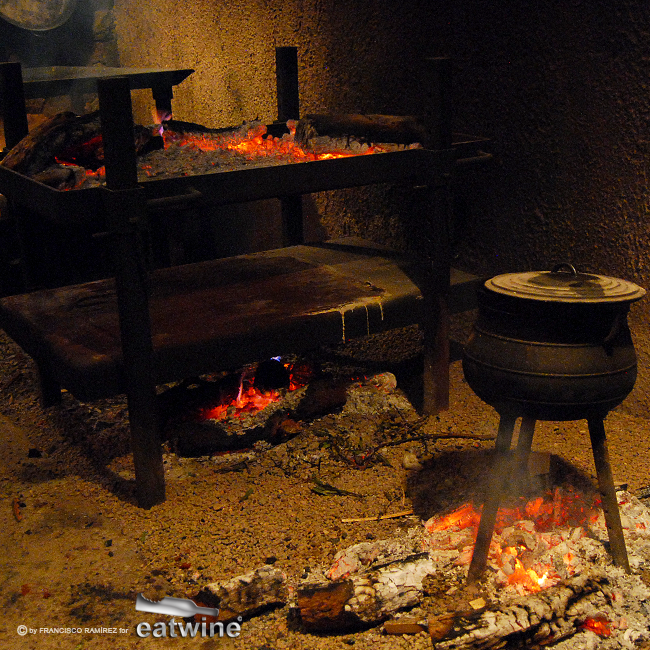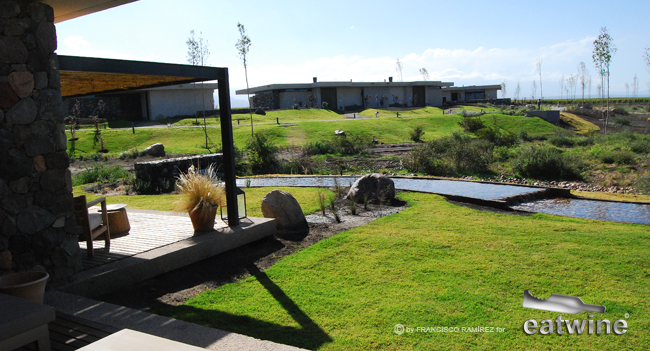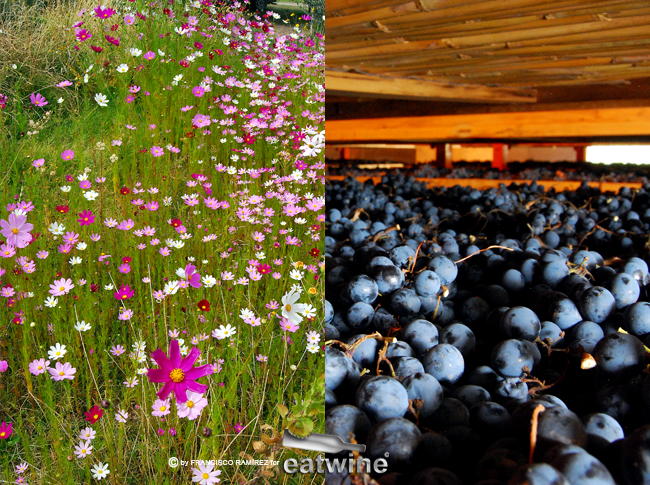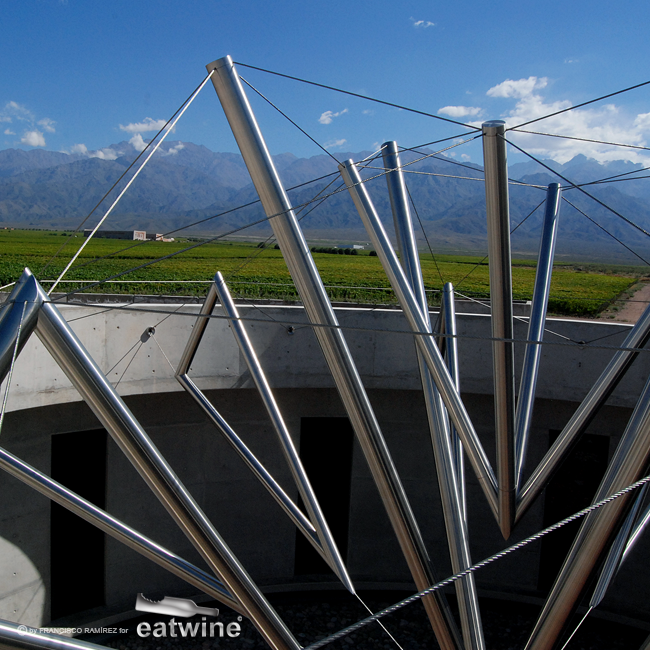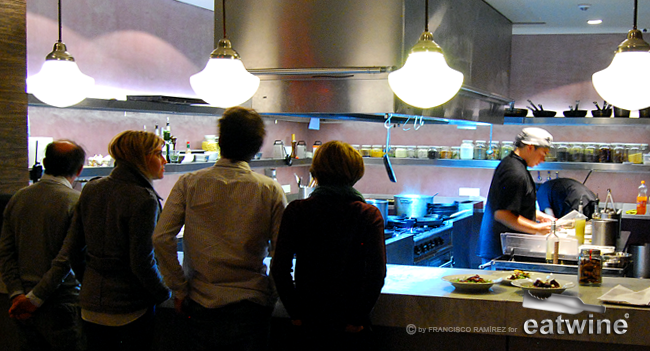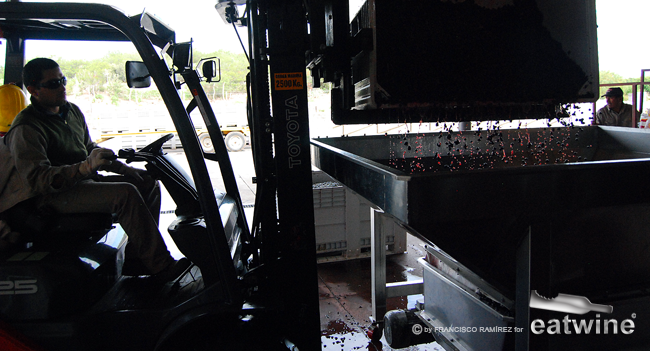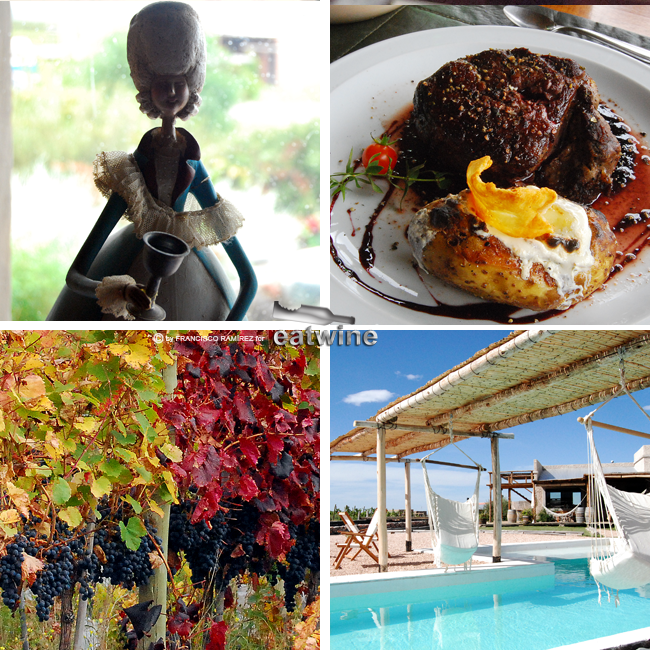In late March, my husband and I embarked on our annual road trip over the Andes from Santiago to Mendoza, Argentina, one of the most scenic routes in South America. We said tchau to the sprawling metropolis of Santiago and cruised past arid, caramel-colored hills north of Santiago into the Aconcagua Valley, carpeted with green vines and the sharp-toothed granite peaks of the Andes in the distance. After slowly ascending two dozen caracoles, switchbacks, we neared the Chilean-Argentine border at over 10,000 feet above sea level, close to Portillo Ski Resort, and passed through the Cristo Redentor tunnel into Argentina at the base of Aconcagua, the highest peak in South America.
It always amazes me how the Chilean side of the Andes has such vertical terrain. It is relentlessly steep. In fact, Chileans often jokingly call the Andes the “Gran Muro Chileno”, Great Wall of Chile, referring to how this natural barrier has maintained the country isolated during much of its history. As we emerged from the tunnel into the glaring morning sunshine, squinting like moles emerging from hibernation, the river valley widened and there was no more sense of vertigo nor dangerously dangling on a curvy mountain road with the valley floor thousands of feet below. The Andes changed instantaneously from steel gray granite to shades of red, yellow, and even green from the mineral content.
We were lucky on this trip. We breezed through immigration and customs in only 15 minutes (and a record driving time for the whole trip). A couple hours later, as we passed the Portrerillos reservoir, a deep azure lake colored by the glacial runoff, I could not believe my eyes. Mendoza was green. Not only that, it was, in fact, blooming. Yellow wild flowers alongside the road danced in the wind. I cast my eyes high up on the red mountains to discover the stratified layers covered in a soft green moss. The shrubby plains were unmistakably verdant and full of soft grasses. What happened to Mendoza…the desert?
“So that’s where all our rain has gone”, I commented to my husband. We remembered several cloudy days in Santiago when Mother Nature teased us with the promise of rain only to have the storm clouds move over the Andes and leave us dry. Mendoza in 2014 has received a record amount of precipitation so far, part of the undeniable changing global climate.
This trip, we were not headed to Mendoza city. Rather, we turned south to another “oasis” within the region known as the Uco Valley, about 80 kilometers from the capital and wine growing region of Lujan de Cuyo. Between Uco and Lujan de Cuyo there is only desert scrubland with a smattering of oil pump jacks and the massive, brooding, snow-crested Andes to the west and the looming Tupungato volcano. Route 40 here feels like the highway to nowhere and little like the wild west.
In Zapata, a police check point, and entry to Uco, we waited behind old trucks filled to the brim (with no tarps) with Roma tomatoes and garlic. No doubt the destiny of these tomatoes was conserva, or homemade tomato sauce, to be consumed during the coming winter months when there’s not a tomato in sight. Uco is its own “agricultural corridor”, irrigated by two rivers producing not only top quality grapes, but two thirds of the other agricultural products are fruits for export like apples, pears, plums, peaches almonds, and walnuts. While it may be considered one single valley, it is not homogenous at all. The valley is punctuated by the green, water-fed oases of crops and trees surrounded by mountains and desert, but there are also hills, gorges, and ancient pine forests.
Uco Valley reminds me of the countryside south of Santiago. Certainly as the vineyards around Lujan de Cuyo have been engulfed by larger Mendoza city, Uco still is far enough to move at its own, slower pace. Winding roads are encased by tall, century-old poplar trees that in autumn turn mustard yellow as fall descends on the region. In the many tiny towns and villages, seemingly frozen in time, vintage trucks from the 70s pulled out of vineyards with cases of dark purple grapes stacked high, baring the fruit of the high-altitude Malbec that has made the region so sought after.
However, what really strikes me about Uco is the light and the scale of distance. The visibility extends for, seemingly, hundreds of kilometers. The sun here also has such an intensity that by 9am, you must have sunglasses and high SPF (well, for my fair skin that is!). The mountains dominate the western horizon of the valley and even a leisurely walk west in the vineyards looks deceptively easy. It’s more like a constant incline that after a while makes your quads burn and you’re out of breath. Uco without the Andes would be unremarkable. With them, it is a haunting beauty and you can never seem to stop gazing.
We arrive at our “home” in Uco, The Vines Resort, a 1,600-acre vineyard-focused property aimed at giving guests an “experience” in the Argentine countryside–a highly pampered one. As we turned off the paved main road, we drove for a couple kilometers among the vineyards belonging to the 135 small vineyard owners (producing over 225 private wine labels). Creative names like La Luna or Amor de Mi Vida. We pulled up to the main lodge, built with low-slung architecture that melded into the mountains. The Andes felt so close I could reach out and touch them. For a minute, I lost my bearings. I was not sure if I had arrived in Arizona, Napa Valley or Mendoza. The Vines Resort has a distinctly American vibe yet the setting is obviously Mendocino.
Uco has been desperately needing a top notch hotel for years. While close to Mendoza, those 80 kilometers are often slow on the country roads, a situation made longer after a day of wine tasting. It was high time for a closer retreat to savor this pristine place. Many of Vines’ guests do not leave the premises. They engage in playing winemaker for a day, if they own a vineyard sit down with the resident sommelier to plan their blend, or simply walk the vineyards, hit the spa, sip wine, eat, relax and take in that grand mountain views. We decided the first day to follow suit and settled into our comfortable, well-appointed condo. After hours on the road (about 7.5 to be exact), we dozed off on the terrace on the soft lounge chairs under a blue sky studded with clouds in the warm sun. Perfect for decompression.
The next morning we arose to clouds. It was the first sweater day of the season for us. I was delighted to have a reprise from the heat in Santiago where March temperatures still felt like January (Hades!). We put on some good driving tunes and set off in the direction of the Manzano Historico on scenic backroads towards San Jose de Tupungato for a morning round a golf in a centuries-old pine forest. Uco Valley, in a short period of time, has become arguably the most exciting wine region in Argentina. It makes the country’s best Chardonnay, along with the coveted high-altitude Malbec (complete with unique floral aromatic profiles) since the wines display intense color, aroma, fresh acidity, and succulent tannins. Don’t be fooled though, these are still “big” wines, there’s no such thing as a low-alcohol “subtle” wine with Mendoza’s dry, continental climate.
Uco has really become quite an international valley, developed by notable foreign wineries like O Fournier (Spain), Achaval Ferrer (Italy-Argentina-US), Andeluna (US), Salentein (Holland), Lurton (France), Clos de los Siete wineries (Michel Rolland, France), Alto Las Hormigas (Italy), and Cobos (US/Paul Hobbs). Within Argentine wine circles, it’s also an elite address with homegrown wineries like Catena Zapata, Zuccardi, Mendel, Rutini, Trapiche and Finca Sophenia all sporting vineyards in the region.
After golf, we stopped off in the “wine corridor” of Tupungato for lunch at one of my favorite spots for honest, homemade food. The chef here “gets” food understanding a dish’s intrinsic balance yet at the same time, infusing everything with care (which always makes food taste amazing). The cuisine playfully deviates from the Argentine triology of grilled meat, pasta, and grilled vegetables by integrating a tasting menu of appetizers and desserts. The clouds covered the Andes but we quickly forgot sipping a favorite Malbec from Lurton.
Back on the Vines homestead, I decided I needed to burn off some of the morning’s medialunas (Argentine-style croissants dangerously delivered every morning to your condo as part of breakfast). The all-glass gym is elevated two stories with a 360-degree of the vines—45 minutes on the treadmill goes by very quickly with that kind of a view.
That evening, we dined at the resort’s signature restaurant called Siete Fuegos, Seven Fires, overseen by Argentine celebrity chef Francis Mallmann, a bit of a personality in these parts. Mallmann, who’s cooking style is inspired in grilling and “burnt” flavors using different fire techniques, has inspired a generation of cooks from his 1884 restaurant in Mendoza, many who have opened their own restaurants to serve an identical menu. A large American group took over the outside patio and no doubt were slowly being ahumados (smoked) by all the grill action. Vines puts on these special dinners several times per week where the chefs demo the seven fires that make up the backbone of Mallmann’s cuisine: the grill, the chapa (flat piece of cast iron over a fire), the infiernillo (two fires with a cooking level in between), the horno de barro (mud oven), rescoldo (method by covering vegetables with hot embers), the asador (to butterfly and cook whole animals), and salt-crusting technique (in this case a whole trout). Each technique is essentially a course and the grill team presents the final results to the group with “oohs” and “aahs”, all paired with Vines’ line of wines.
Although a grand feast, my husband and I opted to avoid the smoke and eat inside a la carta. I personally do not do well with the large, heavy dinners so common in Argentina (all at 10pm), and have a love for Mallmann’s salads that marry “burnt” vegetables, artisan cheeses and greens. My husband ordered a crunchy salad with grilled seasonal pears wrapped in tender Serrano ham, studded with blue cheese and a pungent olive oil sauce. It was fruity yet acidic and worked well with the Rutini sparkling wine (I sipped my one glass ever so slowly with baby en route). I was seduced by the smashed beets salad with baby greens goat cheese, and garlic chips. Over the years, I have come to love beets. Their true beauty is not apparent when boiled into tasteless submission (the usual cooking technique here). In this dish, Mallmann has his team cook them in a broth enriched with olive oil and vinegar, then smashed and griddled. The natural sugar content creates a chewy, burnt crush that is delicious when paired with the greens and this creamy, tangy cheese. Love at first taste.
My husband and I toasted our day. Tomorrow we were meeting new, smaller wine projects, a trend starting to flourish in the valley. There is most definitely a lot happening in Uco and it merits more than a day away–maybe several. Good wine, beautiful mountains, a laid back vibe, a great trio.

